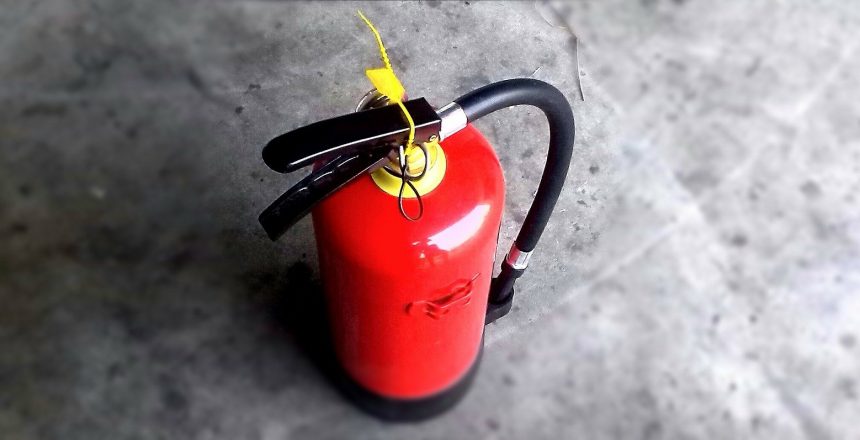Considering that most fires occur in residential dwellings, fire safety in blocks of flats that contain multiple dwellings is an incredibly important topic. A such, it is critical that all residents understand both how to prevent fires and how to escape if a fire were to occur in either their flat or building. Furthermore, residents should be aware of the legal responsibilities for fire safety which are an obligation of whoever is in charge of managing their building.
How to prevent fires in blocks of flats
Blocks of flats are designed to provide some protection against fires occurring throughout the building. This is known as compartmentation and is achieved by dividing the building into fire-resisting compartments (the flats, communal areas, and stairwells, etc) using fire doors, floors, and walls of fire-resisting construction.
Compartmentation can prevent the spread of fire, smoke, and toxic gases and provides an adequate amount of time for residents to safely evacuate the building. This means that if a fire breaks out in one of the flats in your building, other flats and residents should be protected for a greater length of time.
Fire door safety
One of the most important elements of achieving effective compartmentation is ensuring that doors are kept shut. Whether these are doors in communal areas, your front door, or doors within your flat, keeping them closed is vital to prevent the spread of fire and smoke. However, it is important that everyone within your flat knows where keys are kept if you plan on locking any doors.
The front door to your flat should be of a different structure to your internal doors, as it should be a fire door that meets current safety standards. It is therefore imperative that you do not replace or alter (by adding a cat flap or replacing the letterbox, for example) your front door without seeking permission or advice from your landlord, block manager, or Stone Carter if we are managing your building.
There are several checks that you can perform to ensure that your front door provides adequate fire protection standards:
- Does it have a label indicating that it is a fire door? – this is usually found on the edge nearest the door frame. Older doors may not have a label.
- Is there an automatic closer attached to the door that effectively closes the door when left open at any angle? This is a legal requirement for the front doors of flats.
- Are fire seals fitted around the edge of the door? These will expand to seal off the gap between the door and the frame in the event of a fire. Fire doors must be fitted with these to meet current regulations.
- Does the door fit the frame properly and fully close against the door stops without any large gaps?
Fire prevention best practices
- Keep doors closed – as discussed above, closing doors inside your flat and in the communal areas of your building will prevent a fire from spreading. Ensure that everyone within your flat knows where keys are kept for doors and windows so that they can escape easily in an emergency.
- Install a smoke detector in your flat – a smoke detector will provide a vital warning sign and extra escape time in the event of a fire breaking out. Mains wired detectors are the most effective and should be checked on a weekly basis to ensure that it is working. If it is not a mains wired detector, you should change the battery every year or when you need to. Smoke detectors should be replaced every 10 years.
- Make sure that all your electrical appliances are safe – electrical fires are the most common type of fire to occur in domestic spaces. It is advisable to make sure that all electrical appliances are turned off when not in use, rather than being left on standby, and that you keep a watchful eye on them in case of overheating.
- Degrease your kitchen regularly – a build-up of fat and grease in your oven, or on your hob or grill can ignite a fire. It can be a dirty job but keeping these areas free of grease and fat as much as possible will help to prevent fires from occurring in your kitchen.
- Remove obstructions from communal areas – communal stairways, hallways, and entrances will often be used as an escape route in the event of a fire, and for emergency services to gain access. It is therefore important that you do not store prams, bicycles, or mobility scooters in communal areas without permission.
Fire Safety Reform
In 2006, the Regulatory Reform (Fire Safety) Order 2005 (The FSO) came into force, which brought fire safety in common parts of blocks of flats up to standard with mainstream fire safety legislation. This occurred to address the heightened fire risk in blocks of flats and to afford the same level of safety that is found when living in a house.
This resulted in some blocks of flats seeing significant work to upgrade fire safety standards in the common areas to comply with this legislation, while other blocks were deemed satisfactory in their current state. These standards have also been embodied in current building regulations, which ensure that adequate fire safety provisions are incorporated in blocks of flats when they are constructed.
As part of the Fire Safety Regulatory Reform Order 2005, it was declared that from October 2006, every block of flats throughout England and Wales must have periodic fire risk assessments of the common parts of the building (this does not include inside the individual flats).
Fire risk assessments
Fire risk assessments must be arranged for your building and kept under review by whoever is responsible for managing the property. This is usually the freeholder or block management company.
Every block of flats must have a person responsible for fire safety in the building under the Fire Safety Regulatory Reform Order. If you are unsure who this is, it is advisable to consult the freeholder to your building or block manager to find out who your point of contact is, should you have any questions regarding fire safety in your block.
During a fire risk assessment, the assessor will examine the front door to each flat together with the communal areas of the building such as the stairwells, entrance halls, corridors, and bin stores. They will be looking to see if the building and the people within and nearby are adequately protected from fire while making notes about any improvements that should be made.
A thorough fire safety assessment will determine the following:
- How likely a fire is to start
- What the consequences would be if a fire did start
- How to minimise the risk of a fire starting i.e. no-smoking signs, electrical safety
- How to reduce the risk of a fire spreading i.e. fire doors
- If there is a functioning alert system in place i.e. smoke alarms
- If escape routes are clear to allow people to evacuate the building quickly and easily
- Whether people inside the building know what to do if a fire starts
- If there is functioning fire defence equipment in place i.e. fire extinguishers and sprinklers
The timeframe in which a fire risk assessment is reviewed will depend entirely on the requirements of your building, as there is no legal timeframe to comply with. However, it is recommended that low-rise blocks up to three storeys, built in the last 20 years have a review every two years. Whereas blocks that rise higher than three storeys or that are older than 20 years should have a review every year.
What to do if there is a fire – advice from London fire brigade https://www.london-fire.gov.uk/safety/the-home/escape-plan/escape-plan-blocks-of-flats/
If the fire is within your flat
- Take the normal way out and do not use the lift
- Do not waste time investigating what’s happened or rescuing valuables
- Move as quickly but as safely as you can to exit the building
- Close doors behind you to slow down the spread of fire and smoke
- Call 999 as soon as you are safe to do so
If there is fire or smoke inside your home but your escape route is not clear
- You may be safer to stay in your flat, maisonette, or apartment until the fire brigade arrives
- Find a safe room as far as possible within the flat from any fire or smoke (with a window if possible)
- Close the door and use soft materials to block any gaps to stop the smoke.
- Go to a window and shout ‘HELP, FIRE’ and call 999
- Be ready to describe where you are and the quickest way for firefighters to reach you
- Try and stay on the line and act on the advice provided
If the fire is outside your flat but within your block or building
You are usually safer staying put and calling 999 to tell the fire brigade where you are and the best way to reach you. Purpose-built maisonettes or blocks of flats are built to give you some protection from fire. This means that walls and doors can hold back flames and smoke for 30-60 minutes.
Many blocks of flats have a stay-put policy unless the fire is within your flat. This is because If you try to leave you could get in the way of the fire service trying to tackle the blaze, become trapped, or inhale smoke.
For advice relating to your building, it is imperative that you contact the person responsible for fire safety in your building. This could be the freeholder, block management company, or a designated person from a Right to Manage or Resident Management Company.


